When it comes to home audio, two popular options are bookshelf speakers and soundbars. But which is the better choice – stand-alone speakers or all-in-one soundbars? We’ll compare key differences between these systems to help you decide what best suits your listening needs and space.
Bookshelf Speakers Overview
Bookshelf speakers are compact left and right speaker sets designed to fit on shelves, counter tops, wall mounts, or stands. They consist of speaker drivers enclosed in a cabinet. While called “bookshelf” speakers, you can place them anywhere with clearance for the cabinets.
Within each speaker enclosure is an integrated amplifier that powers the drivers. The speakers connect to each other through speaker wire. An audio source like a TV, stereo, phone, or computer transmits sound through the wiring into the powered speakers.
Here are some notable features and components of bookshelf speaker systems:
- Enclosures – Typically wood or plastic boxes housing the inner workings. Enclosures come in various shapes like cubes, rectangles, ovals, etc. Real wood veneer provides a premium look.
- Drivers – Convert electrical audio signals into sound waves. Full-range drivers handle all frequencies. Others specialize in specific ranges like woofers for lows, tweeters for highs, and midrange drivers. Multiple drivers provide wider frequency reproduction.
- Amplifiers – Provide power to operate the drivers. Amplifier watts indicate maximum power handling. Match your amplifier watts to your driver size and room size.
- Ports – Openings that enhance bass by tuning the enclosure’s resonance. Ported enclosures provide more bass than sealed versions.
- Controls – Knobs, switches, or buttons on the speakers allow adjusting listening levels and settings like bass/treble. Wireless speakers may have connectivity controls.
- Connections – Bookshelf speakers use speaker wire inputs to connect to a sound source. Some models add other input options like RCA, USB, Bluetooth, WiFi, etc.
With components miniaturized into a compact package, bookshelf speakers provide hi-fi stereo sound for music, TV, movies, and more. You can start with just two speakers or expand over time into surround sound.
Soundbar Systems Overview
Soundbars provide a simplified audio upgrade for TVs and home theater. This all-in-one sound system combines multiple speakers and amplifiers into one long bar. Soundbars sit below or mount above/below the TV screen.
Inside a soundbar enclosure are integrated amplifiers, multiple left, center, and right-channel speaker drivers, and audio decoding technology. Advanced soundbars add separate wireless subwoofers for deeper bass and rear surround speakers for immersive movie audio.
Models range from basic 2.0 channel designs with left/right speakers to elaborate 5.1.2 channel systems with added center, surround, and height channels. More internal speakers allow wider frequency range and directional sound.
Here are key components that make up a soundbar system:
- Enclosure – Long bar shape houses all electronics. Subwoofers are separate tall boxes. Wall mountable designs have shortened depth.
- Drivers – Full-range drivers reproduce all frequencies. Some models add specialized tweeters and woofers. Drivers angle left, right, and center to widen the soundstage.
- Amplifiers – Provide power to drive internal speakers. Amps range from under 100 watts for basic models to over 500 watts for premium soundbars. Wireless surround speakers have built-in power.
- Subwoofer – Adds deep bass impact. Powered enclosures use larger woofers than possible in the soundbar. Sub position adjusts bass effects.
- Audio decoding – Built-in Dolby and DTS decoders recreate movie theater surround sound from TV audio tracks.
- Connectivity – Soundbars plug into TV HDMI ARC ports for audio and control. Other options: Optical digital, coaxial, RCA, Bluetooth, WiFi, etc.
Soundbars provide an all-in-one audio upgrade that’s quick and easy to set up. But bookshelf systems offer more flexibility. Let’s compare their key features and performance.
Direct Feature Comparison
To choose the best home audio option for you, let’s break down how bookshelf speakers and soundbars stack up across these categories:
Sound Quality
With separate enclosures and drivers, bookshelf speakers can provide wider frequency range and stereo imaging. Soundbars counter with multiple angled drivers and wireless subwoofers for powerful, immersive surround sound.
| Bookshelf Speakers | Soundbars |
|---|---|
| Separated left/right channels enhance stereo imaging and soundstage width | Angled left/right drivers widen soundstage<br><br>Dedicated center channel improves dialogue clarity |
| Specialized tweeters reproduce crisper treble | Multiple small drivers can constrain treble and bass extension |
| Bass ports boost low-end response | Subwoofers add strong bass depth |
| Open enclosure design reduces internal resonance | Cramped single enclosure can cause acoustic interference |
| Easy to add a subwoofer for deeper bass | 2.1 and upwards systems include a subwoofer |
| Fuller midrange from larger woofers | Compact drivers limit mid/bass response |
| Sound localization from separate directional speakers | Surround speakers project immersive effects |
Sound Quality Comparison
| Bookshelf Speakers | Soundbars | |
|---|---|---|
| Treble Extension | Excellent | Good |
| Midrange Clarity | Excellent | Good |
| Bass Depth | Good | Excellent with subwoofer |
| Soundstage Width | Excellent | Good |
| Surround Effects | Good with add-ons | Excellent |
</div>
Overall, bookshelf speakers excel at natural stereo imaging. Soundbars counter with convenient surround sound effects. Adding a subwoofer to bookshelf speakers can improve bass response.
Setup and Placement
Bookshelf speakers require wiring left and right enclosures separately. Soundbars compact all elements into one unified piece for quicker installation. Both benefit from strategic placement.
| Bookshelf Speakers | Soundbars |
|---|---|
| Flexible positioning allows soundstage optimization | TV-centric design constrains placement |
| Can be wall mounted, placed on stands/shelves, or set on floor | Must place in front of TV screen or wall mount |
| Speaker wire must be run to left and right sides | Single HDMI/optical cable provides connections |
| Position affects stereo imaging and bass response | Angle relative to seating impacts sound quality |
| Speakers can be separated wide apart | Compact width limits separation distance |
| Wireless models transmit signals up to 300 feet | Add wireless rears/sub for satellite setup |
| Requires amplifier or receiver to power | Self-contained amplification and audio decoding |
Setup is quicker with a soundbar’s unified design. But bookshelf speakers offer more placement flexibility for room acoustics optimization.
Setup and Placement Comparison
| Bookshelf Speakers | Soundbars | |
|---|---|---|
| Installation Time | Medium | Very Quick |
| Placement Flexibility | Excellent | Fair |
| Wiring/Cables | Moderate | Minimal |
| Wireless Options | Limited | Excellent |
</div>
Expansion and Upgrading
A major bookshelf speaker advantage is easy component swapping to customize your system. Soundbar expansion requires matching proprietary add-ons.
| Bookshelf Speakers | Soundbars |
|---|---|
| Add subwoofer for deeper bass | Matching wireless surrounds and subs available |
| Choose your own speakers, wires, and amps | Limited to model-specific add-ons |
| Replace worn components | Entire unit typically needs replacing |
| Experiment with better drivers and amps | Limited to bundled amplification |
| Create surround sound with add-on speakers | Moving can lose surround calibration |
| Upgrade pieces over time | All-in-one limits phase-by-phase upgrades |
Bookshelf systems better accommodate expanding your sound to match growing needs and budget over time.
Expansion and Upgrade Comparison
| Bookshelf Speakers | Soundbars | |
|---|---|---|
| Add Subwoofer | Yes | Model Dependent |
| Add Surrounds | Yes | Model Dependent |
| Component Swapping | Excellent | None |
| Phase-by-Phase Upgrades | Excellent | Poor |
</div>
Aesthetics
Bookshelf speakers blend into your living space as elegant hi-fi components. Soundbars conspicuously tie your audio to the TV.
| Bookshelf Speakers | Soundbars |
|---|---|
| Available in a variety of materials like wood, plastic, etc | Limited to industrial bar design |
| Can visually blend into a room as decor items | Obvious extension of the television |
| Flexible positioning options | Matches TV location |
| Wide size selection from compact to tower | Restricted length for TV placement |
| Choose matching or contrasting designs | Many models only come in black |
The streamlined minimalism of soundbars simplifies your setup. Bookshelf speakers offer far greater style flexibility to complement your room decor.
Aesthetic Flexibility Comparison
| Bookshelf Speakers | Soundbars | |
|---|---|---|
| Size Selection | Excellent | Poor |
| Color and Finish Options | Excellent | Fair |
| Matching Decor Design | Excellent | Poor |
| Flexible Positioning | Excellent | Poor |
</div>
Price Considerations
Soundbars start cheaper but scale up higher as elaborate surround systems. Bookshelf speakers have a wide spectrum of price points. Overall budget is a major factor.
| Bookshelf Speakers | Soundbars |
|---|---|
| Wide range of price points from $50 to $5,000+ per pair | Budget models under $100, premium reach $2,500+ |
| Can build a system in phases spreading cost over time | All components bundled into upfront cost |
| Only pay for what you need and upgrade discretely | Complete packages are major one-time purchases |
| Higher startup cost than basic soundbar | Cheapest option for minimum spend |
| Used market provides value deals on components | Limited used soundbar selection |
With more flexibility, bookshelf systems may better fit partial upgrades over time rather than a single major soundbar purchase. But soundbars start cheaper for minimum viable spend
Cost Considerations
| Bookshelf Speakers | Soundbars | |
|---|---|---|
| Budget Entry Point | $100+ | Under $100 |
| Cost for Elaborate Setup | $1,000+ | $700+ |
| Gradual Upgrade Capability | Excellent | Poor |
| One-time Purchase Price | Higher | Potentially Lower |
</div>
Primary Pros and Cons
To summarize the key benefits and downsides:
Bookshelf Speaker Pros:
- Wider frequency reproduction from specialized drivers
- Room-filling stereo imaging
- Component swapping for upgrades and customization
- Flexible separate enclosure placement
- Stylish options to match room decor
- Gradual pay-as-you-grow cost structure
Bookshelf Speaker Cons:
- More complex wiring and setup
- Higher startup cost than basic soundbar
- Need for external amplifier or receiver
- Subwoofer often required for full-range audio
Soundbar Pros:
- Simplified all-in-one setup
- Compact footprint fits neatly with TV
- Built-in audio decoding
- Immersive surround sound effects
- Subwoofer included on 2.1 and up models
- High clarity center channel for TV/movies
Soundbar Cons:
- Constrained width limits stereo separation
- Set amplification and driver capabilities
- Few style options beyond industrial bar
- TV placement restrictions
- Proprietary satellite add-ons only
- No component swapping
Recommended Usage Scenarios
Considering their respective strengths helps match bookshelf speakers or soundbars to usage scenarios:
Bookshelf Speakers Ideal For:
- Audiophile stereo listening – specialized drivers and crossover components optimize fidelity
- Room-filling background music – excellent dispersion for large spaces
- Home theater aficionados – build elaborate surround systems by choosing components
- Turntable/vinyl setups – wire into vintage stereo receivers with the purest amplification
- Multi-room audio distribution – place speakers in any room including outdoors
- Musicians – affordable monitors for practicing instruments
- PC gaming and multimedia – position for optimal stereo imaging
Soundbars Ideal For:
- Minimal space requirements – compact all-in-one footprint
- Quick and simple TV audio upgrade – single cable setup
- Rental properties or dorm rooms – unified piece moves and installs easily
- Secondary TV audio – basic improvement without elaborate installation
- Dialogue clarity for TV/movies – clear center channel beats small TV speakers
- Immersive surround sound – built-in decoding and wireless speakers
- Wireless listening – single transmitter with no wiring runs needed
Consider your primary usage – music vs. TV/movies – and space limitations to choose what fits best. Bookshelf speakers accommodate wider configurations while soundbars simplify setup.
Our Top Picks
Based on critical acclaim and buyer reviews, here are our top recommendations:
Top Bookshelf Speakers
Budget
Edifier R1280T Powered Bookshelf Speakers
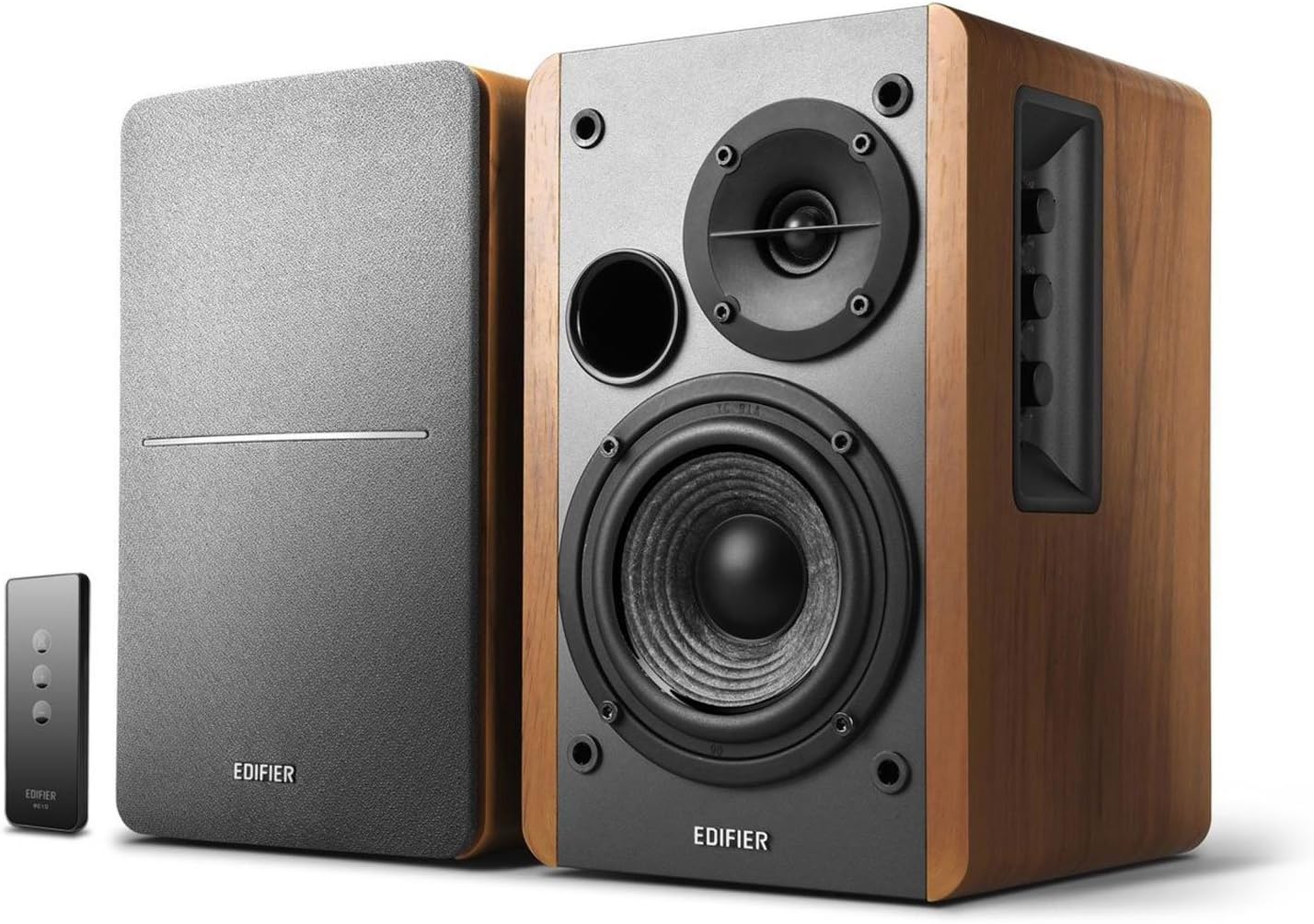
- Great starter 2.0 system with impressive sound for the low price
- Built-in amplifiers power 4″ woofers and 13mm tweeters
- RCA and optical inputs beyond speaker wire connectors
Mid Range
Klipsch Reference Premiere RP-150M
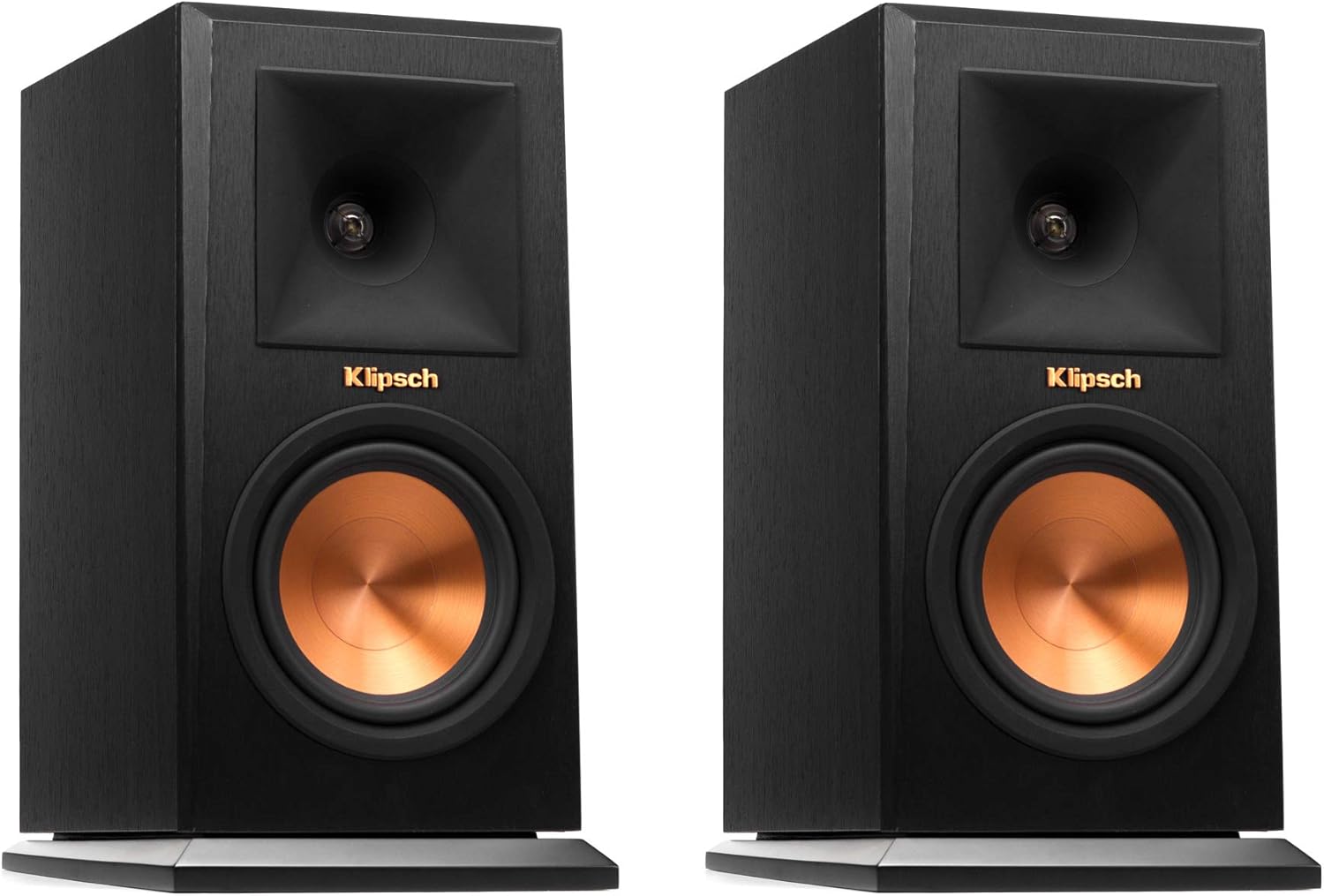
- Lightweight build yet powerful crisp audio across frequencies
- 1″ aluminum tweeter and 6.5” mineral-filled woofer
- Sensitivity to pick up detail even from low-powered amps
High End
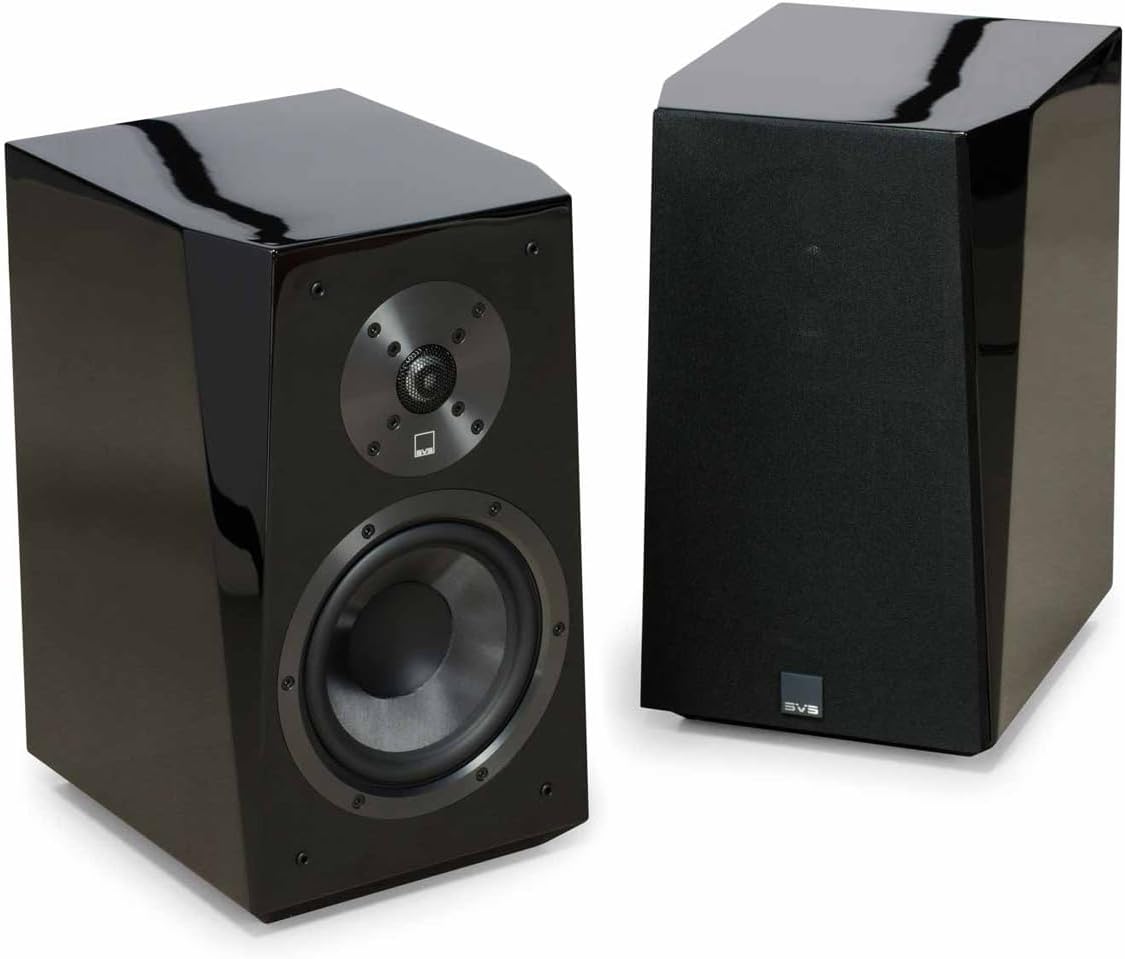
- Premium drivers and cabinet design for audiophiles
- 6.5” mid-bass driver and 1” aluminum dome tweeter
- Staggered cabinet eliminates internal resonances
- Available in gloss black or premium wood veneer
Top Soundbars
Budget
TCL Alto 6 2.0 Channel Sound Bar

- Huge bang for the buck
- Roku TV ready with simple setup process
- Bluetooth connectivity
- Voice control via Siri, Alexa, etc.
Mid Range
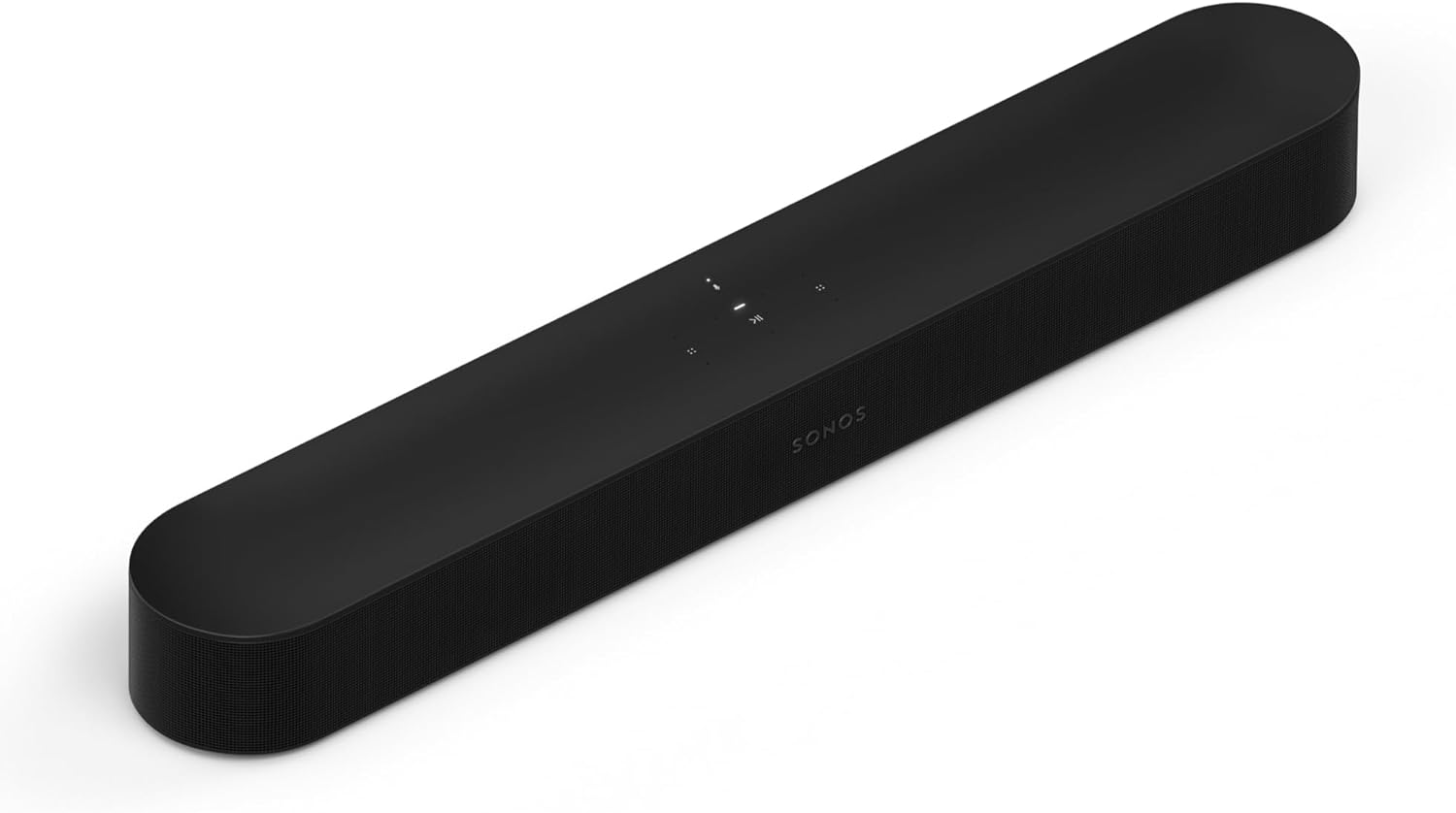
- Superb balanced audio performance in a compact form
- Speech enhancement mode makes dialogue crisp and clear for TV
- Alexa and Google Assistant voice control built-in
- HDMI eARC, WiFi, AirPlay 2, Spotify Connect
High End
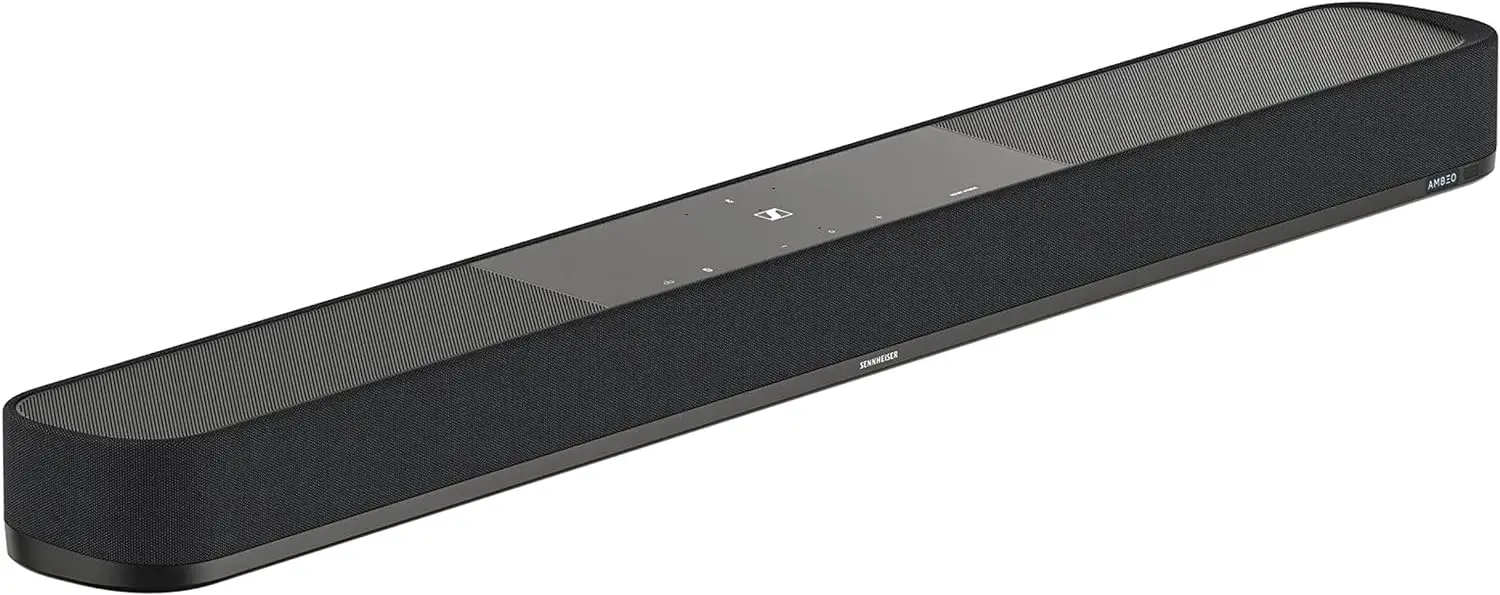
- 13 integrated drivers plus sub deliver surround immersion
- Upward-firing and side-firing speakers create 3D sound effects
- Virtualizes stereo content into 5.1.4 channel Ambeo spatial audio
- Cutting-edge connectivity like eARC HDMI and Chromecast
Key Takeaways – Choosing What’s Right for You
When deciding between bookshelf speakers and a soundbar system, consider these key points:
- Soundbars prioritize convenience while speakers offer flexibility
- Measure the room size and seating layout to select adequate power
- Focus on stereo music fidelity vs. surround sound immersion
- Bookshelves allow building a system over time vs. soundbar all-in-one
- Soundbars suit small spaces; bookshelves can fill large rooms
- Factor in your ability to run speaker wires if needed
- Shelves/stands needed for bookshelf placement vs soundbar below TV
- Choose based on primary TV vs. music usage
- Compare soundbar expandability vs. bookshelf component swapping
- Weigh startup cost vs. ongoing upgrade budget
Before purchasing, think hard about your space, usage needs, and budget flexibility. Bookshelf speakers give creative freedom, while soundbars provide an easy one-stop audio upgrade. Keep these key considerations in mind, so you end up with the home audio system that satisfies both your needs and ears for years to come.

